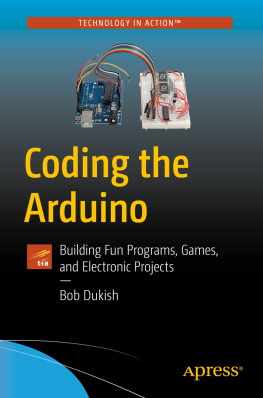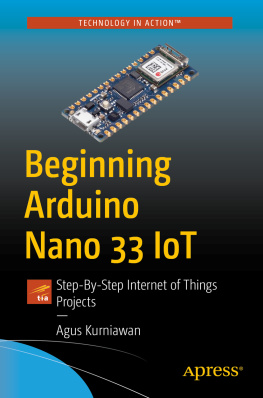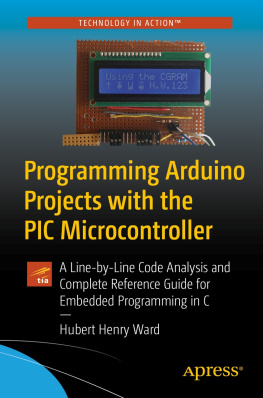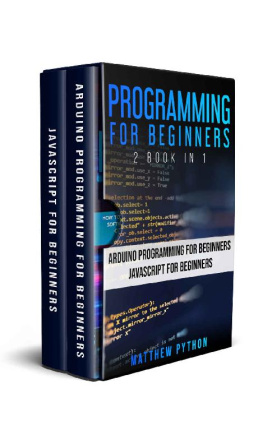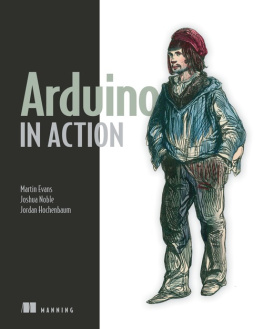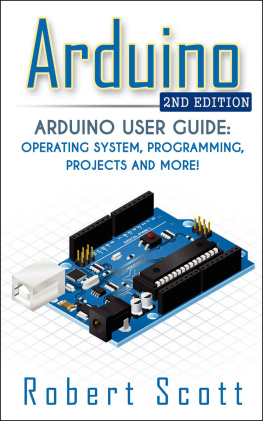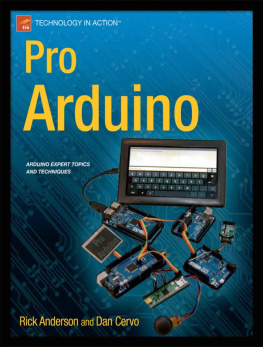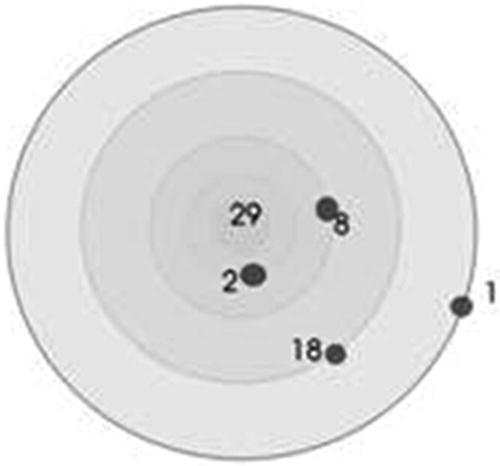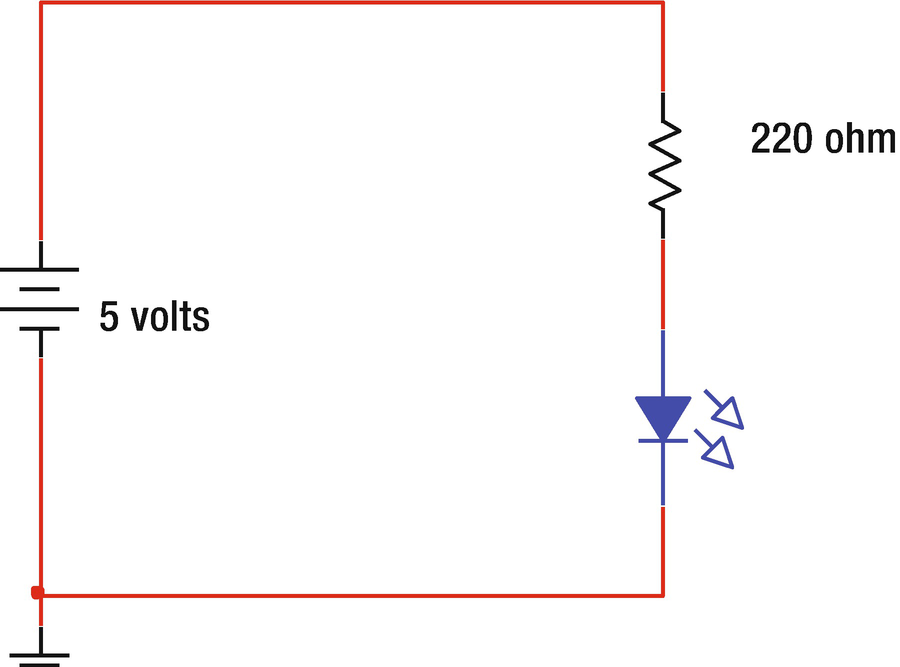1. A Background on Technology
The Difference Between Science and Technology
The two words science and technology are used interchangeably in the everyday world, but the fields are distinguishably different. As a technologist, one should have a profound appreciation of science ; however, it is imperative that a technologist not only appreciate and understand general scientific concepts, but also be able to apply them to the everyday world. Essentially, science can be thought of as a body of knowledge with technology being the practical application of that knowledge. To be an effective electrical engineer or technician, for example, it helps to have an understanding of the actual physical theory of materials and electricity, but many times we will take a simplified approach to solve specific problems. To gain an understanding of the reasoning for simplification in problem solving, please refer to Figure , a drawing of the copper atom.
Figure 1-1
The Bohr model of the copper atom
The copper atom is composed of 29 protons, each having a positive charge, and located at the center of the atom. Surrounding the protons and uncharged neutrons in the nucleus are 29 negatively charged electrons in several thin spherical clouds located at distances from the center . The location of each cloud is dependent on the energy level of the electrons it contains. Electrons with higher energy levels are located farther away from the center. Like charges repel and unlike charges attract in an inverse square relationship to the distance between charges. In the element copper, there is a single electron called the valance electron in the highest energy level, and that electron is loosely bound to the atom because of its distance from the nucleus. The basic original theory of charge, and even the name electron, comes about from the work of early Greek scholars more than 2,500 years ago, who theorized about electrostatic interactions between cloth and the substance known as amber . More recently, physicists in the early 1900s helped to refine our basic understanding of the structure of matter. Through studies of the nature of electricity, it is known that in a conductive wire, such as one made of copper, if given an amount of external energy from a power source such as a battery, the electron farthest away from the nucleus can become free, and escape the atom to flow with an organized electric current through the wire, eventually joining an atom farther down the line that has a vacancy, called a hole , from the loss of its highest energy electron. Although the movement of each electron , called drift, takes a slight amount of time, the effective signal speed through the entire wire occurs at roughly three-fourths the speed of light.
With the preceding explanation, it is possible to have a very good working knowledge of how a conductor works. Please note that materials at the atomic level are actually much more complicated due to recently discovered quantum theory, but we do not need to discuss the subatomic quarks to understand the essential mechanics for electric current flow. Our technological discussion, therefore, relies mainly on the educated guesses of ancient Greek scholars 2,500 years ago, and through the groundbreaking, but now outdated, explanation of the construction of atoms by physicist Niels Bohr in the 1920s, which is enough to give us a simplified working model of matter as it relates to current flow through a conductor. Now, let us go back in time about 200 years, to the days of one of Americas greatest scientists, Ben Franklin, who was without an understanding of the atomic theory, for which Bohr was awarded the Nobel Prize in 1922. Ben Franklin used intuition and common sense, and hypothesized that electric flow most probably flowed like water, from a high level, to one that is lower. He felt that, like gravity, the electric force pulled down toward a low point of charge. We now typically refer to this low point as either ground, neutral, or return .
Many college courses in electrical engineering still use Ben Franklins conventional current theory to evaluate circuits like the one shown in Figure , even though Franklins flow , called conventional, is completely backward! Thanks to the work of Bohr and other scientists of the 20th century, we now know that the negative electrons are the current carrier, as the proton is more massive and locked within the nucleus, but we can simplify the thought process for problem solving by using the conventional flow theory of Ben Franklin. The conventional idea is that the flow of current starts at the positive terminal of the battery (red wire) and proceeds around the loop, until it ends up at the batterys negative terminal (black wire). The reason that current flows is because the battery is providing an electric force to the circuit through chemical means, and a path for the current flow exists through the components that are in series in the loop of wiring connected between the battery terminals. Theoretically we know the electrons are jumping from atom to atom toward the positive battery terminal, but it is more helpful to us, for problem solving, to use the analogy of water flowing through a pipe when thinking about the process of electric current flow in a wire.
Figure 1-2
An LED circuit
The symbols used in our circuit drawing might look a little like ancient Egyptian hieroglyphics, but they actually make sense once we have a little background information. We call the symbols and diagrams schematics . The battery in the circuit is shown on the left, and the symbol is how a car battery looks inside, as seen from above with the water fill caps removed. The battery is comprised of a system of plates of metal surrounded by a sulfuric acid solution. One plate loses electrons, and the other gains them. This chemical action is responsible for setting up a positive charge on the one outside terminal of the battery, and a negative charge on the other. In our light-emitting diode (LED) circuit , the positive terminal is shown on the top. Because our circuit has a complete path of components and wiring, it is called a closed series circuit , which allows the batterys stored electric charge to flow as current through the components and wire around the loop. The first component that the conventional current flow encounters is shown as a squiggly line, which is the schematic symbol for a resistor. A resistor is used to restrict current flow. Again, the symbol is drawn to make sense, and can best be understood if you think of electric current flow being similar to water flow, and then thinking about how a stream or river zigzagging from side to side would tend to restrict, or resist, the free flow of water. The next component in the circuit that the current encounters is the LED, shown wired just underneath the resistor. It is a schematic symbol drawn as an arrow, because diodes only allow current flow in one direction. The positive and negative sides of the diode must connect toward their respective terminals of the battery or it will not light . The diode has polarization, whereas the resistor does not. The LED negative side can be identified as having the shorter lead, and also is represented by the side of the plastic component that is slightly flattened. Diodes work with electric current flow somewhat similarly to how valves work with water flow. In fact, in the very early days in the development of electronic diodes when they were vacuum tubes, they actually were called valves. Diodes have many purposes in electronics; when they are used to turn alternating current (AC) into direct current (DC) they are called rectifier diodes ; diodes used to keep a voltage constant are called regulators or Zener diodes ; and diodes used to oscillate at microwave frequencies and produce radio signals are called tunnel diodes. The LED is a diode that has the enhanced function to give off light as current flows through the polarized junction. The small unconnected arrows shown at an angle from the component in our schematic signify that it is an LED, with the arrows representing the light that is emitted from the device.

